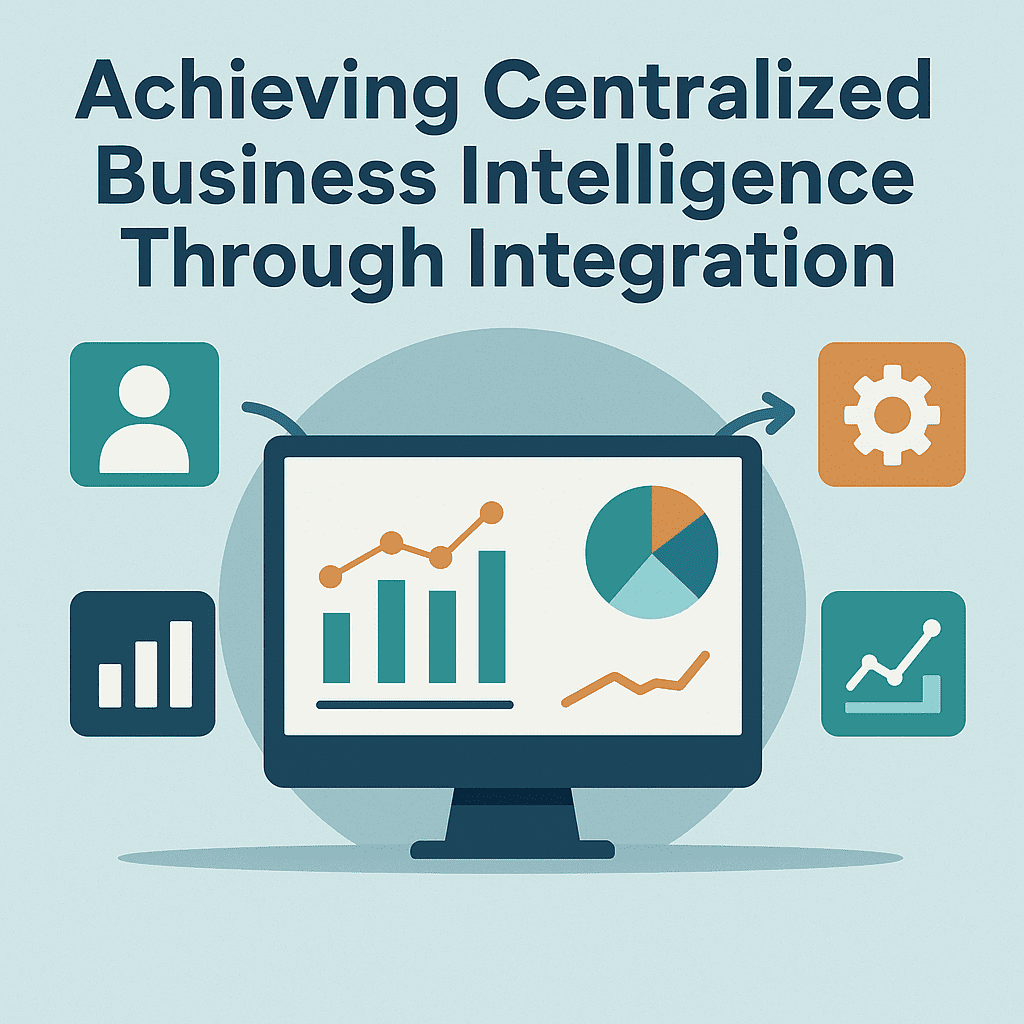In today’s data-driven world, businesses rely on Business Intelligence (BI) to make informed decisions, identify opportunities, and stay competitive. However, when data is scattered across multiple platforms, tools, and departments, it becomes difficult to create a complete picture. This is where system integration plays a critical role. By integrating your business systems, you can centralize BI, streamline workflows, and unlock more powerful insights.
Read More: Achieving Centralized Business Intelligence Through Integration
What Is Centralized Business Intelligence?
Centralized Business Intelligence means having a single, unified view of all your business data. Instead of logging into different platforms—CRM, ERP, HR systems, marketing tools, and financial software—you can pull everything into one place. This ensures decision-makers have accurate, real-time information without wasting time piecing together reports from multiple sources.
Why Integration Is Key to Centralized BI
System integration connects your different business tools so they can share data seamlessly. When done correctly, it helps eliminate data silos, reduce manual work, and improve overall data accuracy.
Here are some of the biggest benefits of achieving centralized BI through integration:
1. Improved Data Accuracy
When systems automatically exchange data, the risk of duplicate entries and human errors is minimized. You get reliable insights you can trust.
2. Faster Decision-Making
With integrated systems, executives and managers can access real-time dashboards instead of waiting for manual reports. This speeds up business decisions significantly.
3. Cost Savings
Automating data flow between systems reduces manual labor, minimizes errors, and saves on overhead costs.
4. Better Collaboration
When teams access the same unified data, they can collaborate more effectively across departments. Marketing, sales, finance, and operations all work from the same source of truth.
5. Scalability
As your business grows, system integration allows you to add new tools without disrupting existing BI processes.
How to Achieve Centralized Business Intelligence Through Integration
To get started, follow these steps:
Identify Key Data Sources – List out all the platforms and tools your business uses.
Choose the Right Integration Approach – Options include APIs, middleware platforms, or custom-built integrations depending on your needs.
Select a Central BI Platform – This could be a data warehouse, cloud-based analytics platform, or an enterprise BI tool.
Automate Data Flows – Ensure that data is updated in real time or at regular intervals.
Maintain Data Governance – Put rules in place for data quality, security, and compliance.
Visit Here: https://fusion-institute.com/aws-outposts-explained-a-guide-to-hybrid-cloud
Final Thoughts
Achieving centralized business intelligence through integration is no longer optional—it’s a necessity for businesses that want to compete in a fast-paced digital economy. By connecting your systems and creating a single source of truth, you empower your team to make smarter, faster, and more profitable decisions.

